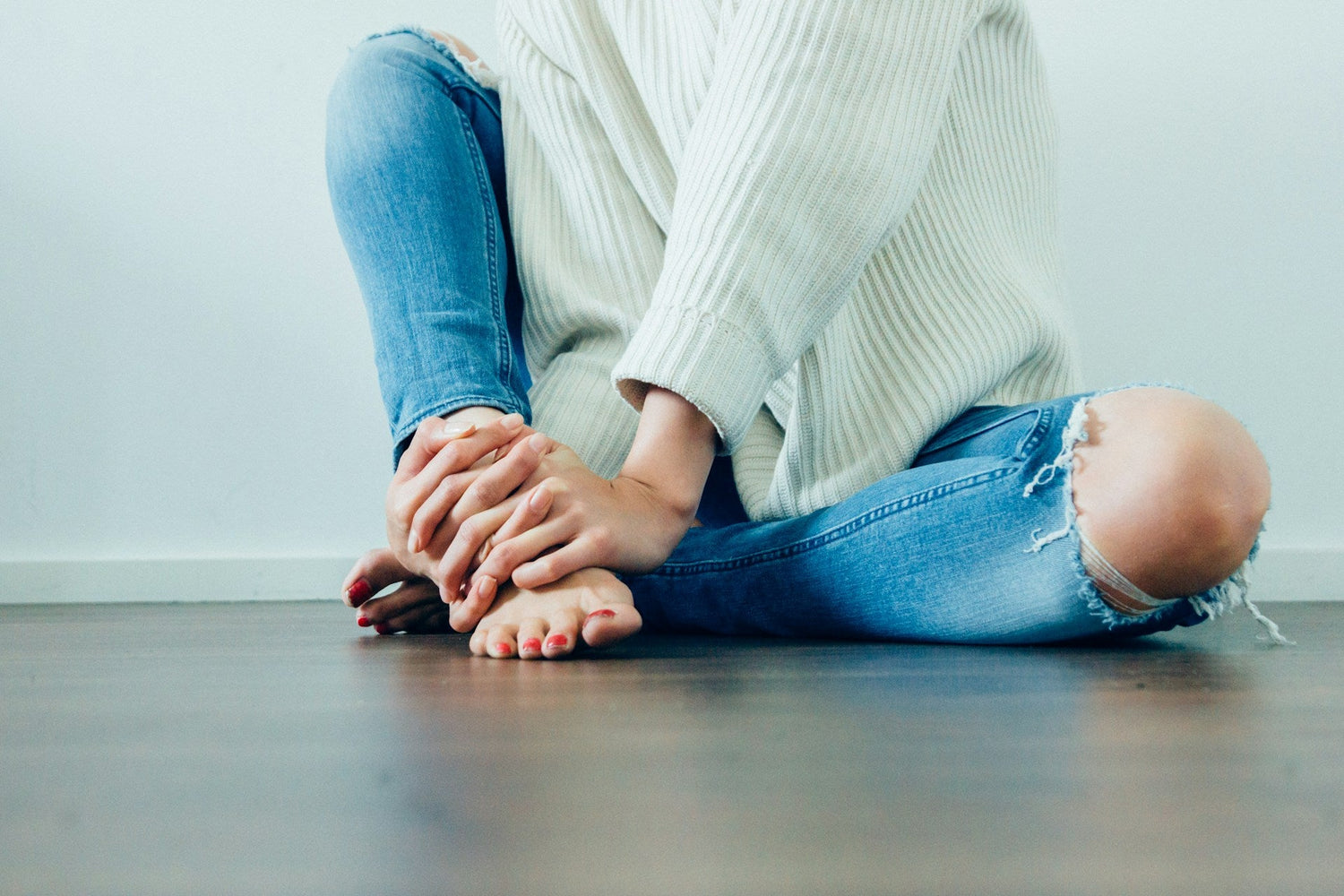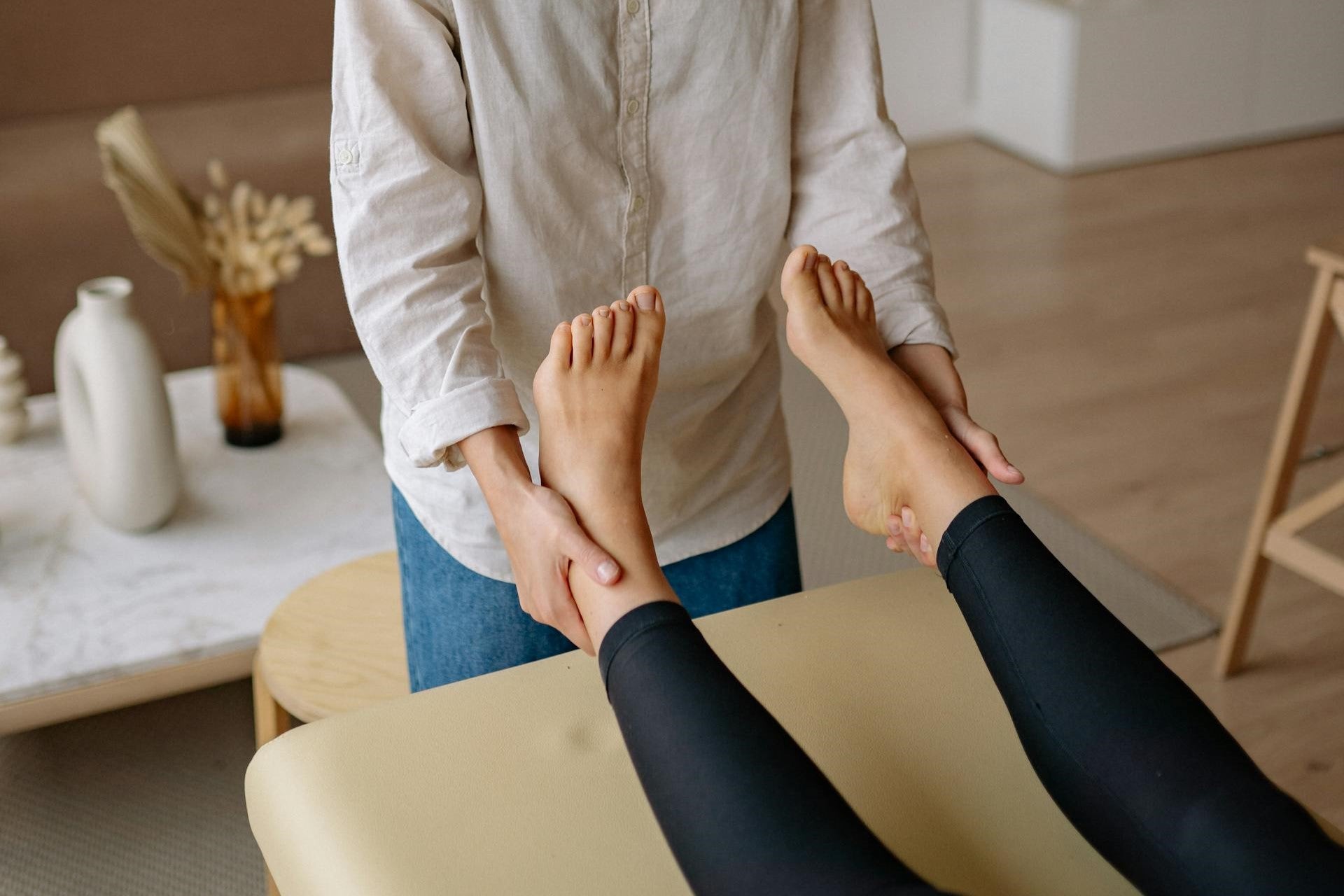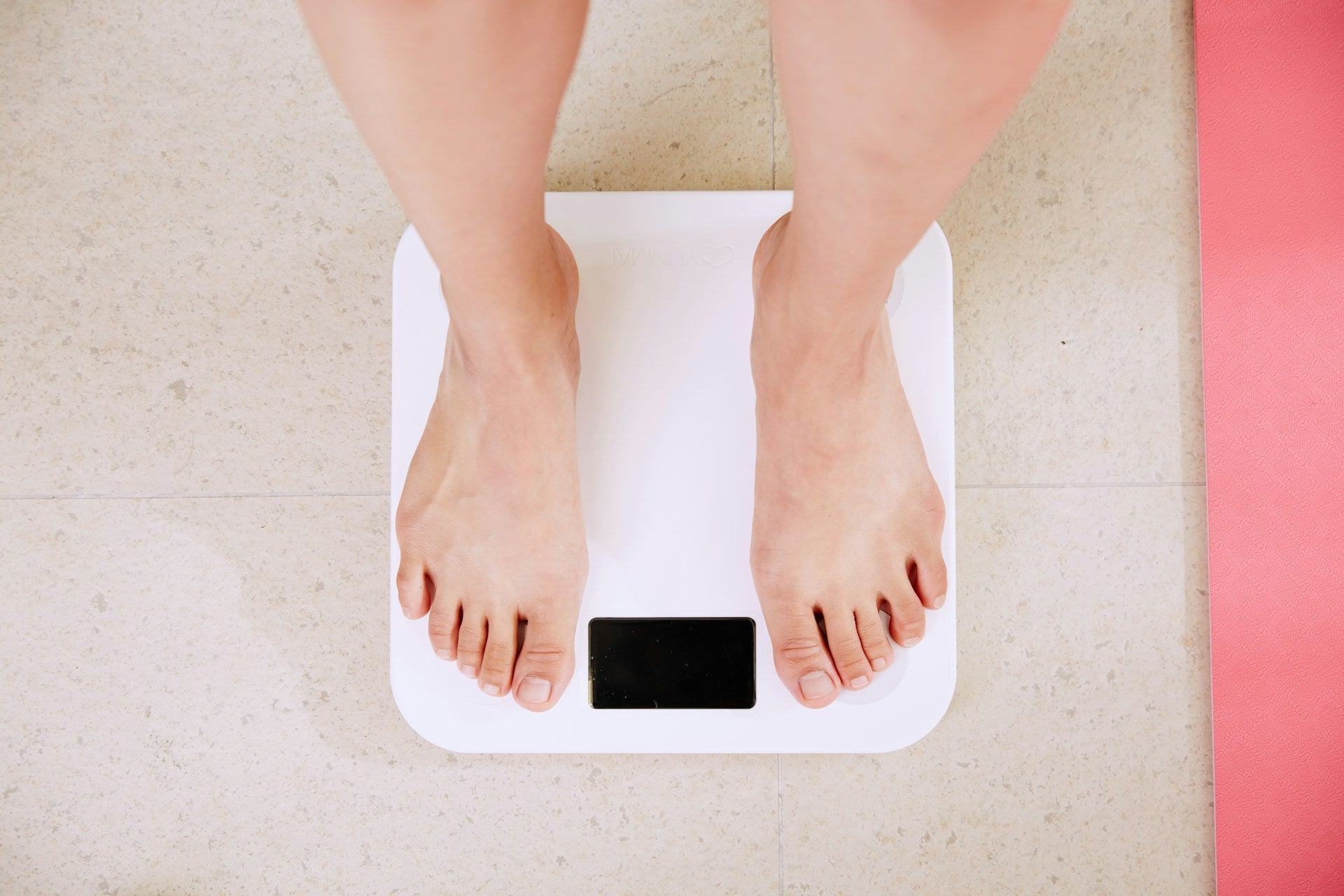Feeling a jolt of foot pain after rolling out of bed in the morning can be worrying. Whether it’s a dull ache or acute pain, you might wonder, “Why do my feet hurt when I wake up, and is it something I should be concerned about?”
Specific conditions can cause inflammation in the foot muscles, ligaments, and tendons — all of which can hurt when you put pressure on your feet in the AM. The good news is that certain home remedies can help.
Keep reading to learn about the most common causes of foot pain in the morning, plus five home remedies to help you find relief.
Why Do My Feet Hurt When I Wake Up?
While foot pain in the morning can have many sources, some of them are more common than others. Here’s what to know about the most likely causes of foot pain after waking up:
Plantar Fasciitis
If your pain is focused around the bottom of your foot near your heel, you might have plantar fasciitis. Plantar fasciitis is a common condition affecting an estimated 1 in 10 people at some point in their lives.
The plantar fascia is a large ligament that supports the arch of the foot. It connects from the heel bone and stretches all the way to the base of the toes. When this ligament becomes inflamed, it can feel more sensitive to pressure, especially when you first step out of bed in the morning.
Why? Simply put, the muscles around the plantar fascia can settle into a “shortened” position while you sleep. When you take your first few steps of the day, the sudden pressure can irritate the ligament and the tense muscles surrounding it.
Who Gets Plantar Fasciitis?
Because high-impact activities can strain the plantar fascia, plantar fasciitis is notoriously known as a runner’s condition — but it doesn’t only affect athletes. This condition can also impact retail workers, nurses, waitresses and waiters, construction workers, and anyone whose daily activities involve standing or walking on hard surfaces for hours at a time.
Specific risk factors for plantar fasciitis include:
- Age. People of all ages can get plantar fasciitis, but people 40 to 60 years old are more likely to experience it.
- Foot mechanics. Flat feet, high arches, and other differences in foot mechanics can put excess pressure on your plantar fascia.
- Obesity. More weight on the feet can also mean more pressure on this ligament.
- Footwear. Improper footwear with thin or hard insoles can result in more strain on your feet.
- Occupations and activities. Daily, long-term shock or stress on your feet can also contribute to plantar fasciitis.
Other Common Causes of Foot Pain in the Morning
While plantar fasciitis is a typical source of foot pain in the morning, it’s not the only condition that can cause it. Other ailments that may play a role include:
Arthritis
There are several types of arthritis — or joint pain — that can impact the feet, ankles, and toes. Wear-and-tear arthritis (or osteoarthritis) is a common source of foot pain, but it might also stem from other types, like rheumatoid arthritis (RA). According to the Arthritis Foundation, around 90% of people with RA will experience pain in their feet or ankles.
With that in mind, morning foot pain from arthritis can feel like stiffness, aches, and tension around the ankle joints, toes, or tops of the feet.
If you think you might have arthritis, it’s important to schedule a visit with your doctor, as long-term arthritis can lead to joint damage and other complications over time.
Tendonitis
There are several tendons in your feet and ankles, including the Achilles tendon, peroneal tendon, extensor tendons, and more. Tendonitis happens when these tendons become irritated or inflamed, usually due to acute strain or chronic overuse.
If your morning foot pain is stemming from tendonitis, you might notice some swelling or warmth around the affected tendon. You will likely also notice discomfort when doing other activities, like jogging or walking up stairs.
Flat Feet
People with flat feet have a specific type of foot structure with a low (or no) arch. Many people genetically have flat feet, but others may notice that their arches start to “fall” as they get older.
One assessment found that 8% of adults over 21 have flat feet — and of these, many will never notice any pain or symptoms. But in some cases, people with flatfoot may experience arch or heel pain.
Other Conditions
Sometimes, foot pain can stem from simple overuse while running or working out, and it goes away on its own with a few days of rest. But in rare cases, morning foot pain could come from things like heel spurs, plantar warts, or other health conditions.
At any rate, it’s always best to check with your doctor if your pain lasts more than a few days, is severe, or is getting in the way of your daily life.
They can help you pinpoint the underlying cause, prescribe treatments and lifestyle changes, and even recommend exercises to help you better strengthen and support your feet.
5 Remedies for Foot Pain in the Morning
If you’ve been waking up with sore, stiff feet in the morning, here’s some good news: the right self-care techniques can promote oxygen-rich blood flow in your feet and ankles, warm up your muscles, and curb your discomfort in the mornings.
Some easy, powerful remedies to try include:
1. Foot Massage

When you notice foot pain after waking up, a foot massage can be one of the quickest ways to find relief. For plantar fasciitis, it can also help reduce tension in the muscles surrounding the ligament by promoting warmth and blood flow.
To try morning foot massage, you can use:
Oscillating Massagers
If foot pain or leg discomfort has been keeping you up at night or interfering with your mornings, a therapeutic foot massager could help. The MedMassager MMF07 is one option that uses oscillating technology for deep restorative relief from common foot ailments.
In fact, a 2020 pilot study found that the MedMassager MMF07 improved restless legs syndrome (RLS) symptoms, sleep quality, and quality of life in patients with RLS.
To use a massager for foot pain after waking up:
- Place the massager on the floor beside your bed, and set it to a gentle speed.
- Rest your feet on the massage surface for one minute.
- After warming up your muscles, adjust the massage intensity to your desired level.
- Let your feet absorb the soothing massage for 5–10 minutes before starting your day.
Hands-On Foot Massage
Because it requires no tools and can be done at almost any time, hands-on foot massage is one of the best self-care tools to add to your routine.
To start, you can simply use moderate pressure to rub your feet however it feels best to you. But for more specific relief, here’s a simple 5-minute massage to try for morning foot pain:
- Cross your foot up over your knee.
- Gently warm up the foot with both hands using light, kneading motions.
- Then, use both thumbs to gently spread the muscles on the bottom of the foot, starting at the center and moving outward. (These are called foot spreads.) Begin at the heel and make your way to the ball of the foot.
- Finish the massage with knuckle glides. Ball your hand into a fist, place it just above the heel, and glide upward with light-to-moderate pressure.
Roll It Out
Rolling out the feet is another easy, soothing way to loosen up tension around the plantar fascia. Simply:
- Grab a tennis ball or other massage ball, and place it on the floor in front of you.
- Roll your foot over top of it with light-to-moderate pressure for 2–3 minutes.
- Focus on the heel, arch, and edges of the foot for maximum relief, being sure not to use excess pressure on areas that are especially painful or tender.
2. Morning Foot and Calf Stretches

When it comes to morning foot pain, experts often recommend stretching your feet for a few minutes before hopping out of bed. You can do this by gently pointing your toes forward, flexing your foot backward, or using your hand to push your toes back for a few seconds.
Beyond that, you can use specific foot and calf stretches a few times per week to improve the mobility, strength, and function of your feet and ankles.
Of course, it’s always important to check with your doctor before trying new exercises if you have medical conditions or injuries. With their OK, here are a few effective, daily foot stretches to try:
1. Towel Stretch
The towel stretch is great for loosening up your feet, ankles, and calves. It’s often recommended as a plantar fasciitis or Achilles tendon stretch — but it can be useful for almost anyone wanting better flexibility. To try it:
- Grab a towel, and have a seat on the floor.
- Straighten your legs out in front of you, and wrap the towel around the bottoms of your feet near your toes.
- Gently pull the towel back until you feel a stretch in your calves and feet.
- Hold for 10–30 seconds, and slowly release back to the starting position.
- Wait a few seconds, and repeat 3–5 times.
2. Toe Stretch
This stretch helps to lengthen the muscles around the big toe and the bottoms of the feet, and a bonus is that it’s easy to do before stepping out of bed in the morning. Simply:
- Cross one leg up over your opposite knee, so you can easily reach your toes.
- Grab your big toe using your thumb and index finger.
- Gently pull your toe backward, and hold for a few seconds.
- Optionally, stretch the toe in light circular motions for a few seconds.
- Finish by using your hand to lightly push back on all of the toes, until you feel a stretch in your foot’s arch.
- Repeat with the other side.
3. Kneeling Foot Stretch
The kneeling foot stretch is another simple tool for targeting and stretching the bottoms of the feet. To try it:
- Sit in a kneeling position.
- Flex your feet so that your toes are on the ground.
- Slowly sit back on your heels until you feel a stretch in the feet.
- Hold for 10–20 seconds, and repeat 3–5 times.
4. Standing Heel Stretch
If you want to promote good Achilles health, the standing heel stretch is an excellent option to add to your morning routine. To try it, you’ll need a wall or sturdy object that you can use for support. Then:
- Stand 1–2 feet away from your wall or object.
- Step back with your left foot.
- Place your hands on the object or wall for support, and lean forward until you feel a stretch in the calf.
- Aim to keep your feet completely flat on the ground.
- Hold for 10–30 seconds, and repeat for 2–4 sets.
- Repeat with the other leg.
3. Strengthening Exercises
Alongside daily stretches, calf and foot strengthening exercises can also help support your feet and ankles, and potentially make you less prone to foot pain in the future. Three easy exercises include:
- Marble pickups. Drop a few marbles on the ground, and practice picking them up with your toes.
- Towel scrunches. Place a towel on the floor in front of you, and scrunch it up using your toes.
- Calf raises. Start with your feet hip-width apart, and raise onto your toes 10 times for 2–3 sets. Stand next to a wall or chair if you could use some extra support.
4. Change Your Footwear
If you’ve ever wondered, “Why do my feet hurt when I wake up?” it may be due to wearing shoes that have little-to-no support, or have an awkward shape that doesn’t suit your feet. Choosing the right footwear is extra important if you’re someone who’s up on your feet all day, as poorly designed shoes can take a bigger toll when your feet are cramped in them for hours at a time.
But what makes a good pair of shoes? Everyone’s foot shape is different, and some people may need to visit a podiatrist for personalized recommendations. But generally, supportive shoes will:
- Feel comfortable right away. Shoes that need to be broken in can often cause pain, especially if they don’t properly conform to your foot shape over time.
- Have cushioned support. Not everyone needs the same type of arch support, but it’s important to find shoes with a solid amount of cushioning.
- Be wide and long enough. Cramping your feet into small shoes can strain the bones, muscles, tendons, and ligaments, leading to pain over time.
5. Heat or Ice
When your feet feel tender due to overuse or inflammation, heat and ice can both be good options for in-the-moment pain relief.
When To Use Ice
Ice is most often recommended when you’re dealing with a recent injury, like an acute bout of tendonitis. This is because a few minutes of using a cold pack can temporarily mitigate inflammation and “numb” the area. Icing is also part of the RICE method — a technique often used to manage minor injuries at home.
When To Use Heat
On the other hand, heat is a go-to choice for chronic, dull pain or stiffness. This is because heat works to naturally dilate your blood vessels, improve circulation, and relax your muscles — all of which can be helpful for long-term aches and pains.
A warm compress is a good option for heat, but you might also enjoy the comfort of a warm foot soak. To try one for morning foot pain, simply run a bath that’s warm but not too hot, and place your feet in the tub for 10–20 minutes before starting your day.
When To See Your Doctor About Morning Foot Pain
If morning foot pain has been worrying you lately, it may be time to talk to a doctor or podiatrist about your symptoms. Be sure to schedule a visit if you notice:
- Pain or swelling that doesn’t seem to be getting better within a few days
- Pain that is severe or debilitating
- Burning pain, numbness, or tingling
The Takeaway
If you’ve ever wondered, “Why do my feet hurt when I wake up?” you’re certainly not alone. Plantar fasciitis is the most common culprit for arch or heel pain in the AM — but it’s not the only cause of morning foot pain, and for many people, overuse, arthritis, and other conditions might also play a role.
For chronic or severe foot pain, your doctor can help you identify the source, as well as guide you in trying remedies like stretching, strengthening exercises, and massage therapy to start finding relief.
For restorative foot massage when you need it most, pick up the MedMassager Foot Massager Plus today, or learn more about its many uses and benefits.



